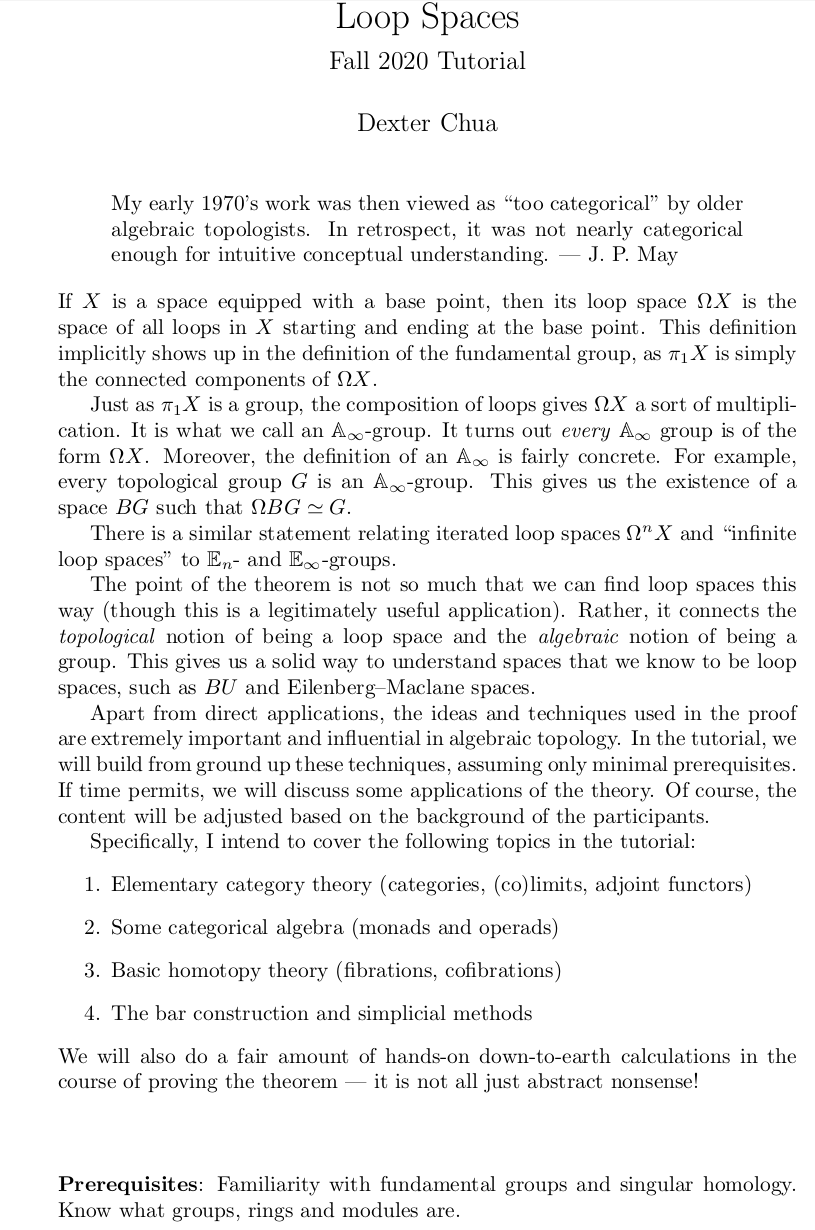| Archived old Fall-Spring tutorial abstracts: | 00-01 | 01-02 | 02-03 | 03-04 | 04-05 | 05-06 | 06-07 | 07-08 | 08-09 | 09-10 | 10-11 | 11-12 | 12-13 | 13-14 | 14-15 | 15-16 | 16-17 | 17-18 | 18-19 | 19-20 |
|---|---|---|---|---|---|---|---|---|---|---|---|---|---|---|---|---|---|---|---|---|
| Archived old Summer tutorial abstracts: | 2001 | 2002 | 2003 | 2004 | 2005 | 2006 | 2007 | 2008 | 2009 | 2010 | 2011 | 2012 | 2014 | 2015 | 2016 | 2017 | 2018 | 2019 |
Fall Tutorial 2020
Fourier Analysis in Number Fields
|
Description: The Riemann zeta function plays an important role in number theory. Its analytic properties encode subtle information about arithmetic, although proving these properties can seem difficult and unwieldy. In this tutorial, we will follow Tate's streamlined approach to proving these properties for a useful generalization of Riemann zeta functions: Hecke L-functions. Tate's approach is remarkable for its systematic application of Pontryagin duality (a generalization of Fourier analysis) to the adele ring, which smoothly unifies algebraic and analytic aspects of number theory. Not only does this result in a much more elegant proof, but it also serves as a gateway to understanding automorphic forms (a generalization of modular forms). Prerequisites include complex analysis, real analysis, and a one-year course in algebra. Familiarity with algebraic number theory is highly recommended. Contact: by Daniel Li, sli@math.harvard.edu |
Loop Spaces
|
Description: Click for a PDF: 
|